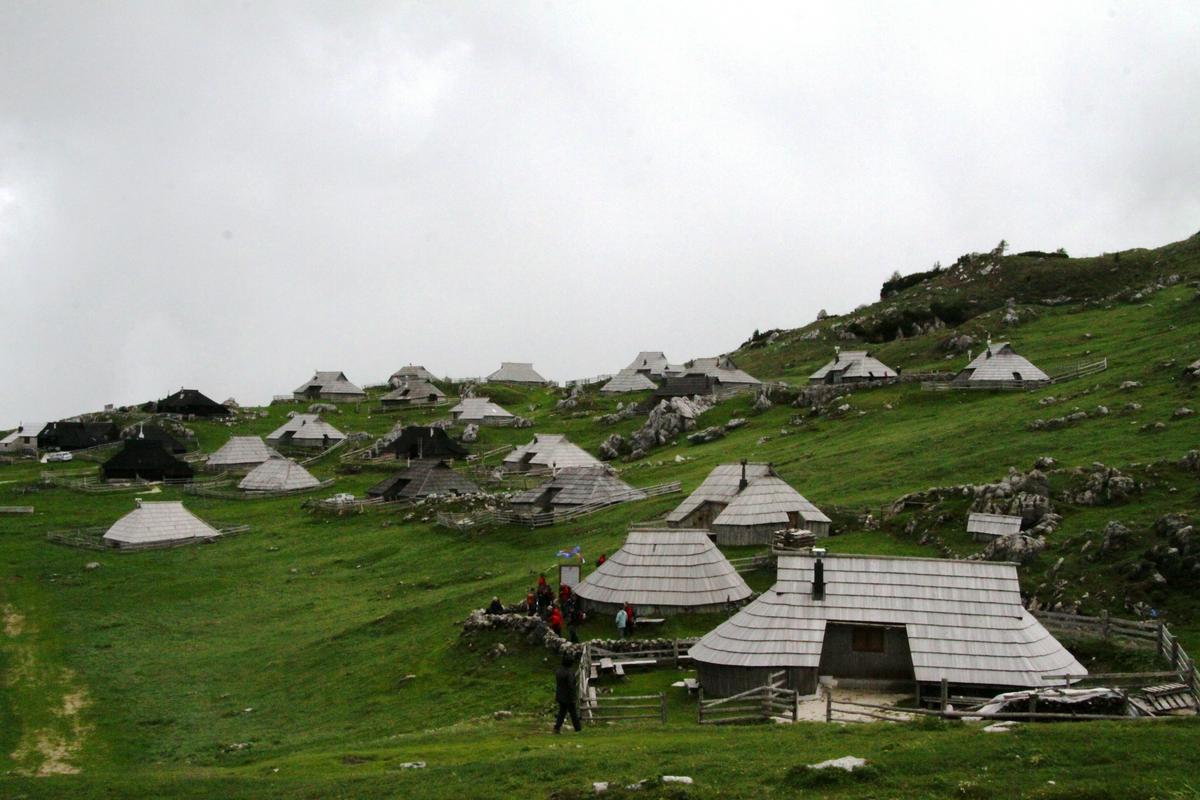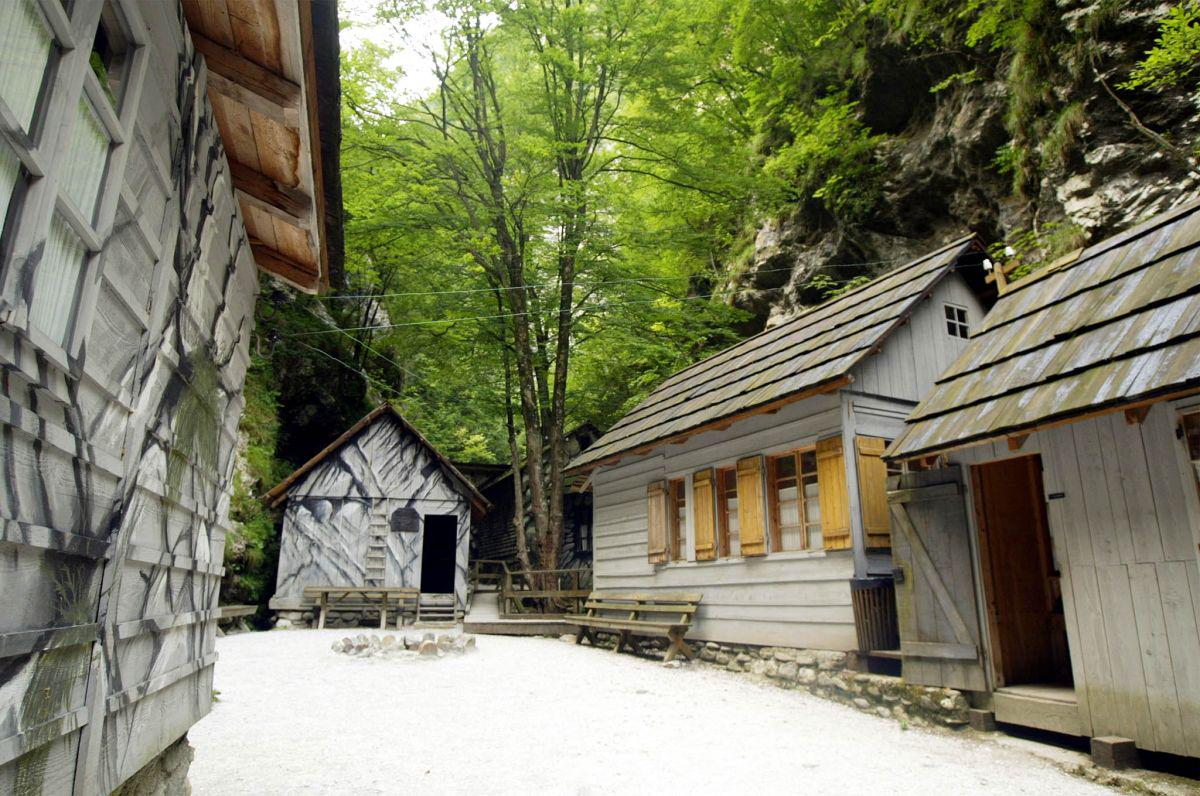
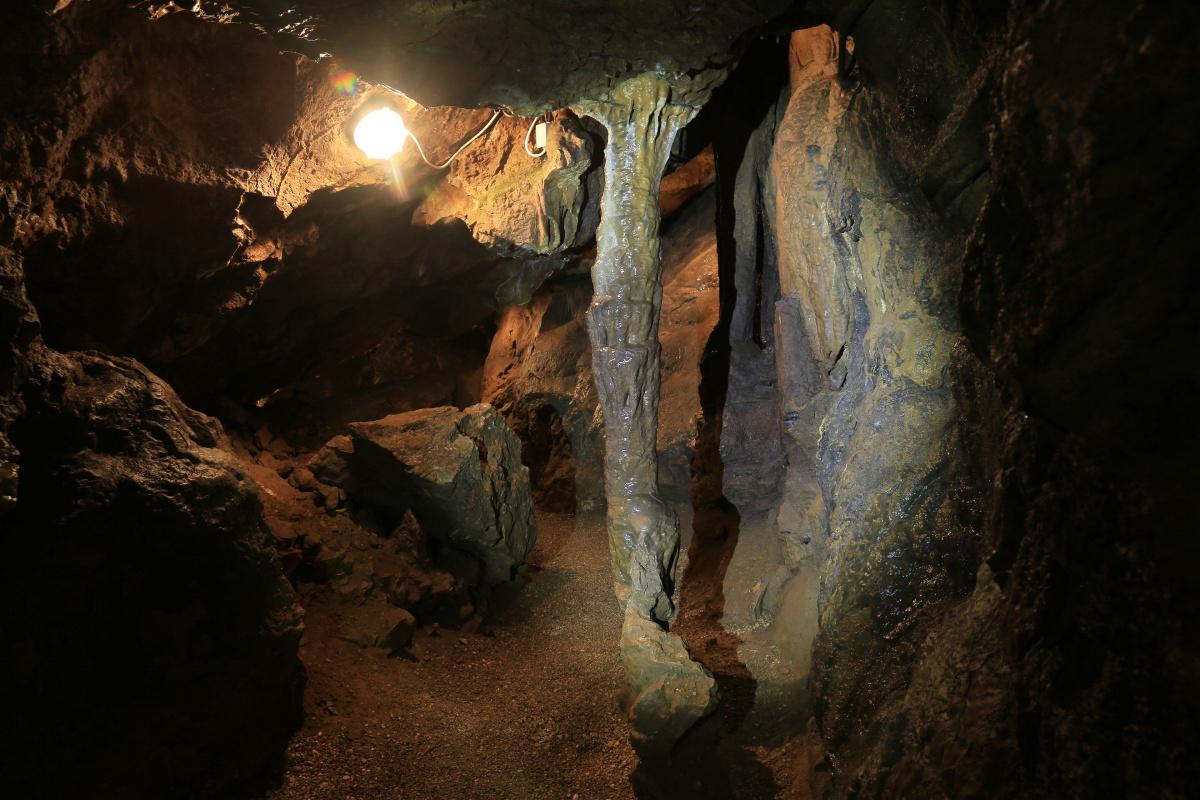
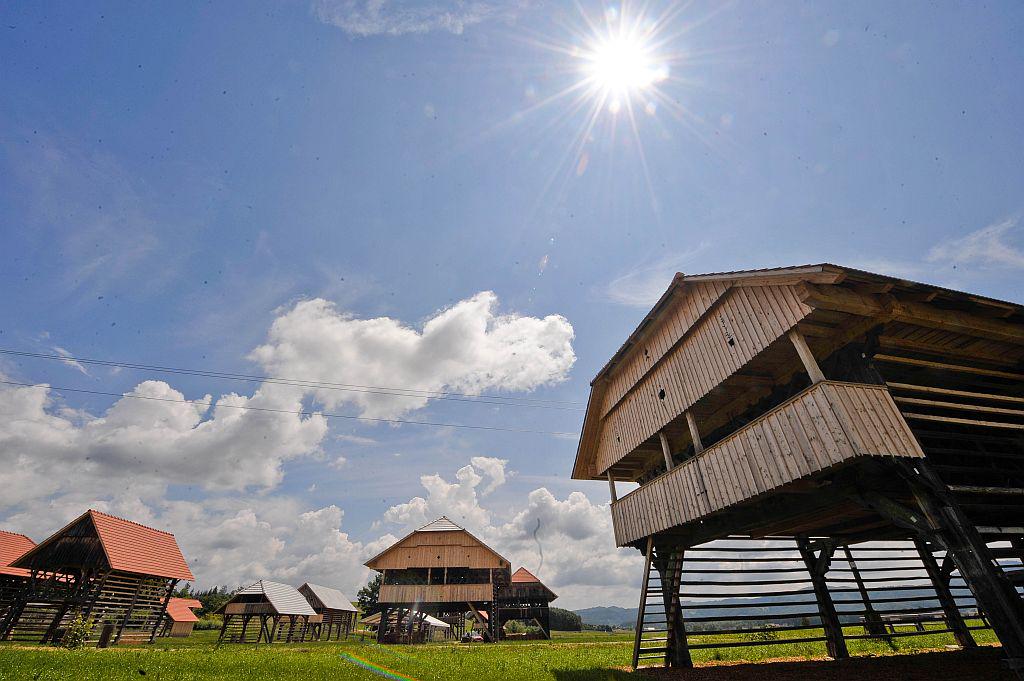
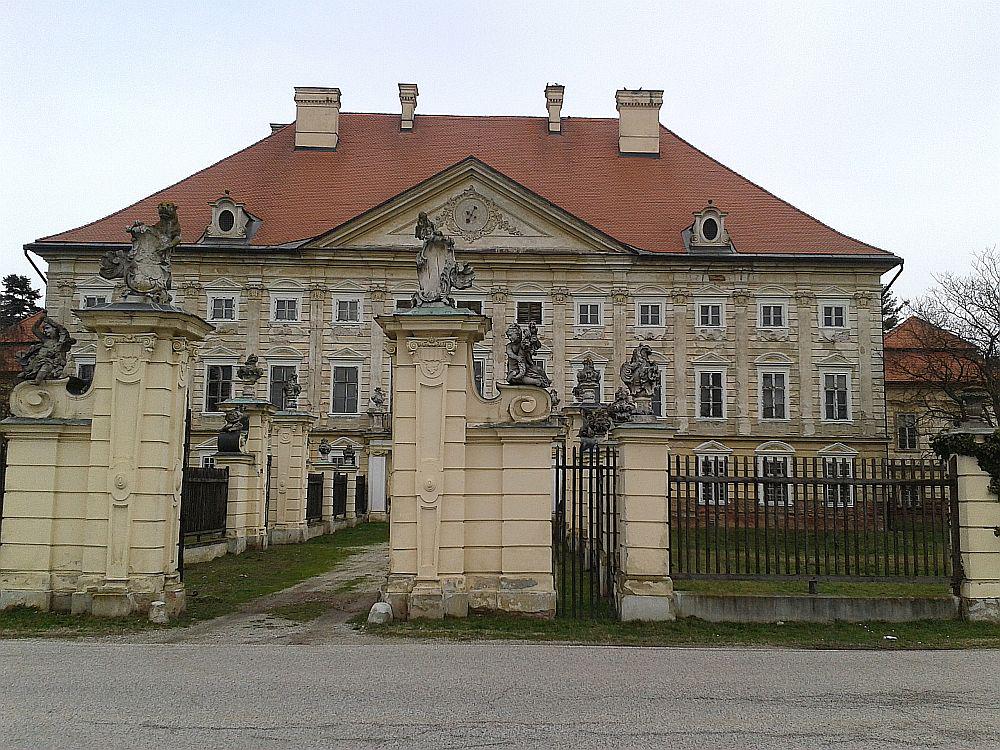
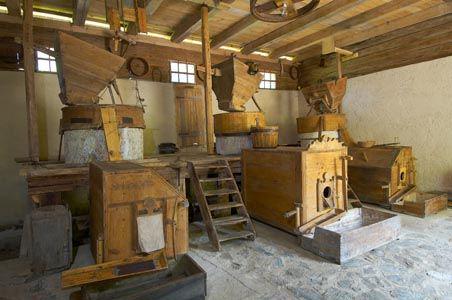
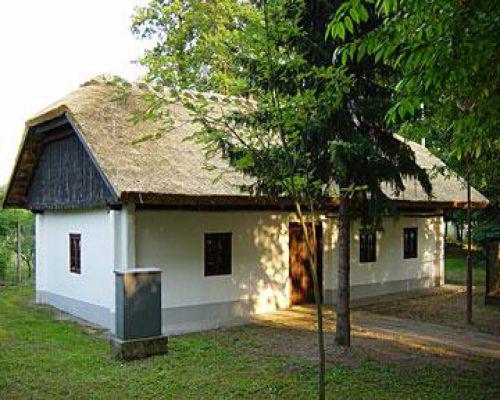


A number of sport activities, sightseeing of cultural sights, trips to nature, tasting of culinary treats in unspoiled nature at a number of tourist farms can help you lead a quality life even at an advanced age. You can visit a lot of interesting tourist destinations in Slovenia before the autumn turns into winter! We chose ten interesting destinations for you.
1. Velika planina (Big Pasture mountain)
For those nostalgic people who love nature and the past, a trip to Velika planina is a must. The herders' settlement is one of the few of this scale preserved in Europe. The architecture is particular, the roofs of the huts are made of spruce shingles extending nearly to ground level. In summer you can taste genuine shepherd food – sour milk and 'žganci'. During your visit the shepherds will be happy to offer you homemade cheese and other dairy produce. On the green meadows you can admire the violet-pink Kamnik orchids ('murka'), and visit the Chapel of Our Lady of the Snows (Marija Snežna) above the shepherds' settlement. The adventurous can hire a hut, sleep over and wake up into a fresh Alpine morning. In summer a number of traditional events are organized at Velika planina – from a cycling ascent to Krvavec to an accordion competition.
Three events were scheduled for August: the Snow Mary holiday (August 5), the blessing Sunday (August 10, 2014), and the Mary Ascension Holiday on August 15. The access to Velika planina is possible by a cable car from the lower station in Kamniška Bistrica. You can reach the top of the mountain by hiking for another hour.
2. Open-air Museum Rogatec
Another way to go back into the past is to visit the open-air museum in Rogatec. The permanent museum exhibition in Rogatec presents the preserved folk architectural heritage of the Subpanonian type, and cultural tradition of the people who lived in the region South of Donačka gora and Boč in the 19th and the first half of the 20th century. The material used, the layout of rooms and the interior furnishing illustratively present the functionality, and the connection of the presented architecture with the way of living of the peasants in the past, along with their material and spiritual world. The museum offers guidance, demonstrations, and workshops on cottage crafts, farm chores, and cultural heritage (weaving with bast or wicker, hand weaving, forging, stonecutting, cooking and peeling willow rods, tying spring greenery in Easter bundles (‘velikonočne butare’) and making dough baskets, Christmas wisk ('šprudl') and bark whistles, baking bread, and you can even learn stilts walking). You can see a beehouse, an outbuilding, a forge, a hay rack, a latrine, the dwelling of the poet Jože Šmit, a pigsty, a vinedresser's cottage, and a well.
The open air museum in Rogatec is open in summer and autumn months, at least until October 31, every day except on Mondays between 10 am and 6 pm.
3. Franja Partisan Hospital
For those who like history, and are in good physical shape, a visit to the Franja hospital is a must! The partisan hospital is a reconstructed monument of the immovable heritage from the WW II, and also a symbol of the fight, the humanity and the heroism of the Slovenian people who joined other nations in fight against fascism and Nazism. The Slovenian resistant movement during the WW II was special for its hidden stationary hospitals. They were built in inaccessible forests, steep gorges, and subterranean caves, Franja Hospital being one of them. Healthcare workers saved lives in such hospitals in circumstances we can hardly imagine today. For anaesthesia they mostly used ether, penthotal and other substances, but they were always short of antibiotics, blood and plasma. They had to improvise at disinfection of linen and instruments used in operations. In the beginning they used to boil the material, and towards the end of 1944 they introduced dry sterilization with steam. In Franja Hospital you can see a ward for the wounded, a kitchen, a bathroom, a home for disabled, a dining hall, an operation theatre and an isolation ward, an X-ray, a power station, and barracks for the staff.
Franja Hospital can be visited until the end of October; from April 1 to September 30 it is open every day between 9 am and 6 pm, and from October 1 to October 31 between 9 am and 4 pm.
4. The Land of Hay racks
In the Land of Hay racks in Šentrupert you can reminiscent about the traditional way of hay harvesting and storage, while you take a look at hay racks in the open-air museum. 19 different manners for drying hay are presented, mostly from the Mirna river valley, and one from the surroundings of Ivančna Gorica. The hay racks are the result of several hundreds of years of development of agricultural and livestock farming on farms, castle or monastery agricultural estates. Especially in Slovenia hay racks developed into various types of characteristic forms which can't be found anywhere else in the world. That's why a hay rack is one of the characteristic Slovenian traits. The open-air museum exhibits six types of hay racks which had, as proved, developed in Slovenia: three single and three double hay racks. The museum extends on the surface of 2.5 ha, with 1 km of trails. The oldest hay rack in the museum is Luka's double hay rack, dated 1795, which makes it one of the oldest preserved hay racks both in Slovenia and worldwide.
The land of hay racks can be visited from Tuesday to Sunday, between 9 am and 4 pm.
5. Dornava Manor
If you are inspired by baroque art, the baroque manor Dornava near Ptuj is a good choice for your autumn trip. The castle is a three-storey palace on the plains of the Ptuj fields, near the Pesnica river. It stands on the axis of a promenade planted with trees, with a front garden in front of the main entrance. The park in the back of the building opens from the Neptune fountain into a fan-like shape. In the beginning of the park stands the sculpture of the Immaculate (the manor chapel is dedicated to her as well), and the park ends a kilometre and a half behind the castle with the statue of the saint Janez Nepomuk. The park extended towards two symbolic end points – churches at Polenšak and Destrnik, which confirms it was the largest baroque unit in Slovenia. The central gala hall is decorated with the images from the Hercules' story, and the other parts of the castle were furnished with rococo style furniture, and decorated with numerous stuccowork. The details of the outside arrangement are exceptional. The front garden has been remodelled and citrus trees grow there now, but the decorative fences are preserved, while on the other side the already mentioned Neptune fountain still stands, along with sculptures of dwarfs and philosophers.
You can arrange for your visit to Dornava by phone with the Municipality of Dornava.
6. The cave of Kostanjevica
If you like natural phenomena, the cave of Kostanjevica will be the right choice. It lies at the foot of the Gorjanci mountains characterised by the diverse Karst terrain. Rain water and underground streams, along with the tectonic movements during centuries, created dreamlike calcareous forms. In 1937 high waters created the presently used entrance to the cave, and opened the cave to the surface world. In 1971 the electric lightning was installed in the cave, and a trail of three hundred meters was made to allow tourists to visit the most attractive parts of the cave. The entire cave is longer than two kilometres, but its complex has not been researched yet in its entirety. The trails though the cave are suitable also for children and elderly visitors. The guided tour lasts forty minutes. The temperature in the cave is constant, 12 degrees C. The cave is the habitat of cave locusts, cave crabs and snails, and bats.
The cave is open for visitors from April 15 to October 31, on Saturdays, Sundays and during holidays, while in summer months (July and August) the visitors are welcome every day at 10 am, 12 am, 2 pm, 4 pm and 6 pm.
7. The mill of Povh
By visiting the mill of Povh in the Šentanelska reka village you can get to know the life of ancient millers from Koroško. The brick house with its pointed roof and three rooms in the ground floor houses a mill, a miller's room with an old furnace, and a workshop. Once the old door to the mill opens, you will be amazed by three millstones driven by a huge mill wheel. You will be shown all kinds of cereals and flours. The mill was mentioned in the land register already in 1845, and it was in use until 1950, for the needs of the Povh family, and the neighbouring farmers. The last time the mill wheels turned in 1976. In the seventies of the 20th century the mill was characterised as an exceptional cultural monument. The visit to the mill is guided, and it takes you back to the times milling in Šentanelska reka was a part of life. The complex in its entirety is an ethnologic curiosity, and a great cultural monument more than 150 years old. After sightseeing you can get your strength back by tasting rye bread, flat cake, cracknels and other treats, and quench your thirst with cider or juice in the attic above the mill. The little house for old retired millers has been transformed into an idyllic suite which can be rented.
The Povh mill can be visited from April to October; you need to call in advance.
8. Shoemakers' Museum
Shoemakers' Museum in Prekmurje reminds us of the times when shoes were much more difficult to come by than today. It was founded in 1979 to honour all shoemakers who worked in Prekmurje, and in Trnišče, as they had an important influence on the development of the place. The founding of the museum was influenced by the shoemaker guild, and the shoe industry Planika. The museum is set in an original Prekmurje house with thatched roof – in such houses shoemakers used to have their workshops, but the houses were not only intended for shoemaking, but families lived there as well. The museum exhibits a lot of tools and accessories used to make shoes. The entire family participated in the work, which usually went on all day round, often into the night. The museum exhibits also shoes, and the machines used for sewing shoes.
You can visit the Shoemakers' Museum by announcing your arrival to Koušta Turnišče Institute.
9. Kolpa Natural Park
If you wish to relax in nature, we suggest you visit the Kolpa Natural Park along the Kolpa river between Slovenia and Croatia, from Stari trg to Dragoš, in the municipality of Črnomelj. The main curiosity of the park is the Kolpa river itself with its valley, which changes its character several times while passing through the park. Besides the Kolpa river and other natural features, some of which have been protected as a natural monument, or a natural reserve, an important part of the park is the cultural landscape of the area, with its characteristic image moulded through ages by hard work of its inhabitants, and which has been preserved until today. The important element of the park is also the rich cultural heritage with characteristic buildings – homesteads closed on all four sides, composed by a living quarter, a barn, a stable, and a courtyard in the middle; and castles, mills, and sawmills along the Kolpa river.
10. Archaeological finds in the Vipava valley
The Vipava valley is an excellent choice for those who would like to explore the distant past, the Roman period, and the remains of its civilisation on the Slovenian territory. There you can find a number of archaeological sites, mostly preserved on the slopes of the Trnovsko plateau where the Roman road had been built. Finds of different objects, and the remains of defensive systems with burrial grounds have been found there. Besides the Castra Roman wall in Ajdovščina, and Ad Pirum fortress at Hrušica, several other archaeological sites have been discovered in various parts of the Vipava valley. You can take a look at the Sv. Pavel site above Vrtovin, mostly famous for the highest preserved Roman tower in Slovenia. Gradišče above Ajdovščina is interesting as well, being the oldest settlement (from the middle of the 2 millennium B. C.), located at the protected rocky plateau of Školj. Tabor above Črniče, from the times of Turkish invasions, is one of the largest archaeological sites of Primorska. The walls made an irregular rectangle, with towers in the corners. It presents the most important archaeological site from the times of the battle at Frigid, with a wonderful view on the eastern part of the Vipava valley.
N. M., translated by G. K.




















































